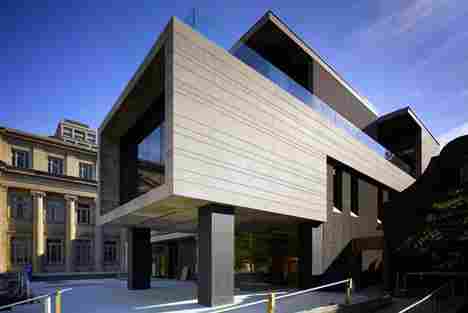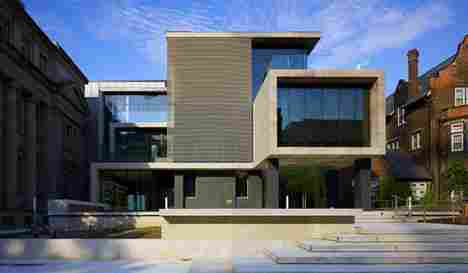The Sovhus 4:12 , measuring in at a tiny 129 square feet (12 square meters), is small in all dimensions. But its design power is undiminished by its tiny volume: the entire end of the cabin is a seamless glass door that hinges out, creating a space entirely open to the surrounding forest. We particularly enjoy the low ceiling height, which invites reclining. At the same time, the cabin is more of a piece of mobile furniture than anything. It was designed by Designed by Johan Leufstadius , who is/was also part of Movado Arkitekter (we can’t really figure out the relationship there).
As seen on the ever awesome Materialicious .
Designer: Johan Leufstadius
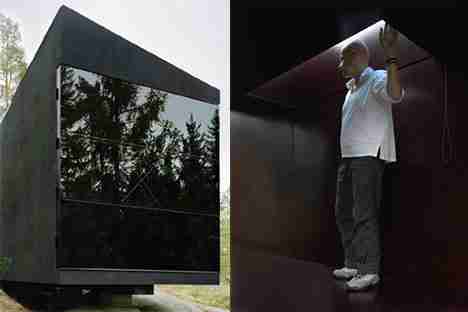
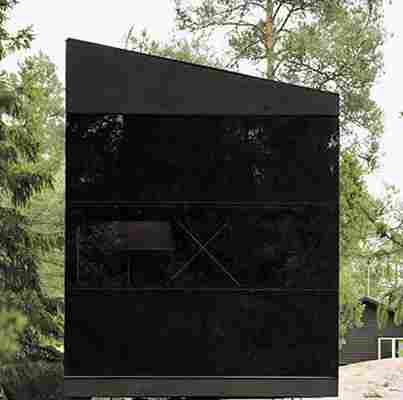
Construction Begins On Vision Machine by Jean Nouvel
New York, NY In 1987, maverick French architect Jean Nouvel burst onto the international scene with a new headquarters for the Arab World Institute in Paris, one of President Franois Mitterrand’s Grands Projets.
With mechanized oculi and veils of glass and steel, the building was hailed as an unconventional masterpiece that encouraged people to not only accept modern architecture in a historic setting, but to be thrilled by it.
Over ensuing years Nouvel has woven art, history, cultural references and new building technologies into provocative architectural contrasts between inside and outside, intimacy and the urban network, and has become renowned as one of the most original designers of his generation.
In conjunction with the 20th anniversary of the opening of the Arab World Institute, construction has begun in New York City on Nouvel’s latest glass and steel landmark, a direct material and conceptual descendant of his Paris tour de force: 100 11th will be a 23-story tower described by its architect as a vision machine at the intersection of 19th Street and the West Side Highway, along the Hudson River in Manhattan.
Designer: Jean Nouvel [ Product Page ] [ Via: Dezeen ]

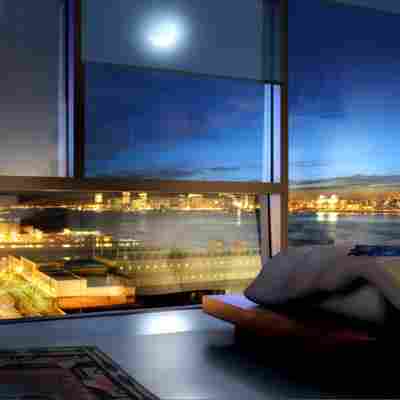
Renovation of Gardiner Museum Of Ceramic Art by Kuwabara Payne Mckenna Blumberg
The Gardiner Museum refurbishment and expansion takes Toronto one more step towards the city’s cultural renaissance along with another recent high-profile project, Libeskind’s Royal Ontario museum extension, across the street. Canada’s only ceramics museum, originally designed by Keith Wagland in 1983-4, received a full makeover by Kuwabara Payne McKenna Blumberg Architects, who transformed the museum’s existing plan from top to bottom, also adding approximately 14,000 sq ft worth of new space.
The addition was built literally on top of the original structure, as the roof was designed especially by Wagland to anticipate expansion. The extra space hosts a new gallery for large-scale contemporary works, a new studio and facilities for the museum’s research and community outreach activities, and essential storage options. The existing part was completely re-configured focusing on the collection’s display and enhancing the plan’s ergonomics.
The museum, completed in June 2006, looks smooth and stylish, with sleek interiors, clad exteriorly in polished buff limestone that weaves seamlessly all volumes together, accentuated by a large cubic entrance welcoming the visitors. The highly refined result plays with the ideas of weight, opacity and light, supported by a consistent texture palette reflecting on the qualities of its ceramic exhibits.
Architect: Kuwabara Payne Mckenna Blumberg
